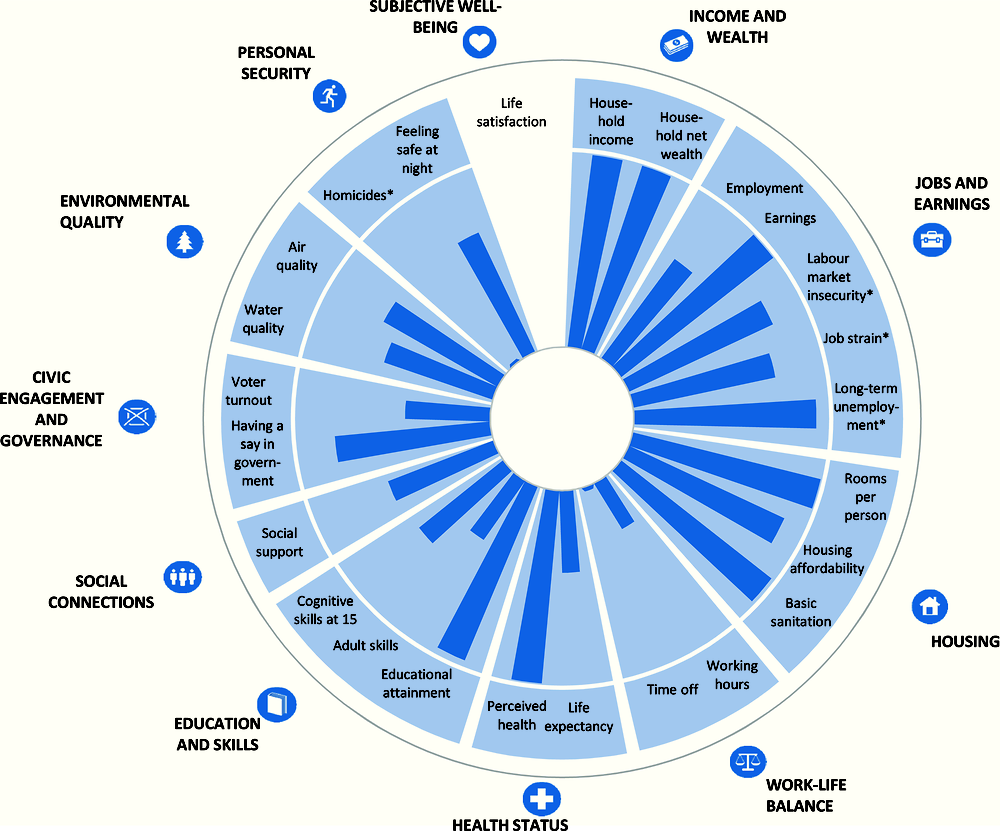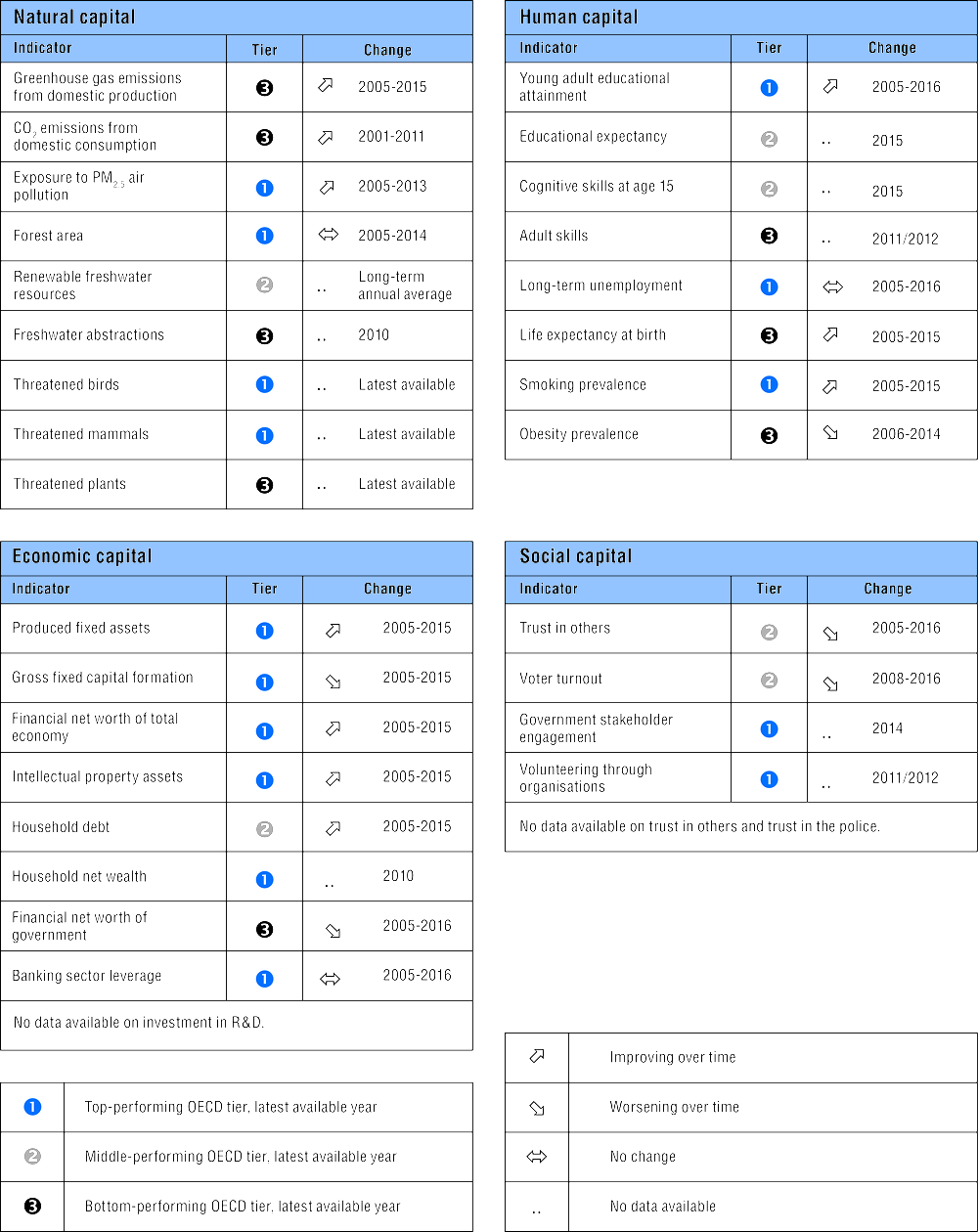How's life in the United States?
Relative to other OECD countries, the United States performs well in terms of material living conditions: the average household net adjusted disposable income was the highest in the OECD in 2015, and the average American enjoys good housing conditions and a low long-term unemployment rate. However, work-life balance is an area of comparative weakness: over 11% of employees work very long hours, and full-time employees report having less time off than in most other OECD countries. At 79 years, life expectancy falls within the bottom third of the OECD. A high share of Americans report good levels of perceived health, although these data are not directly comparable with those of the other OECD countries due to a difference in the reporting scale. Moreover, nearly 90% of the adult working-age population have attained at least an upper secondary education. However, the skills of both American adults and 15-year-olds are lower than the OECD averages. Furthermore, the United States has the third-highest rate of homicides in the OECD.


